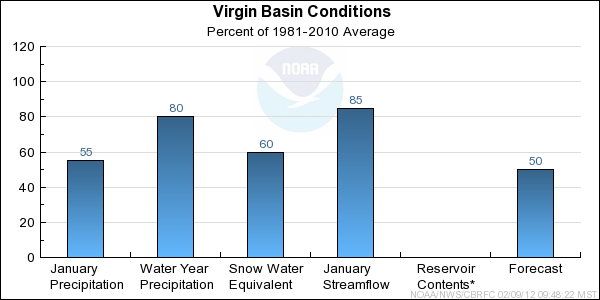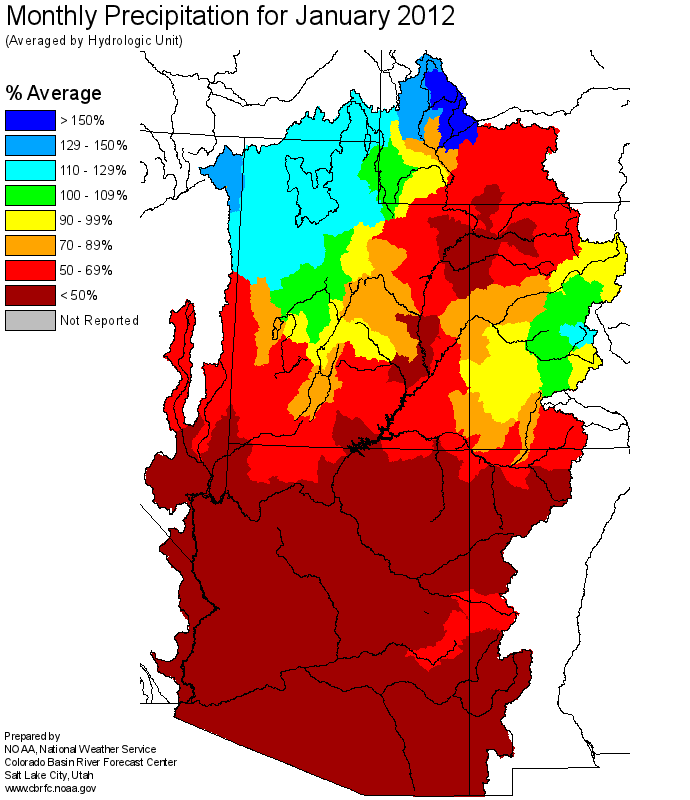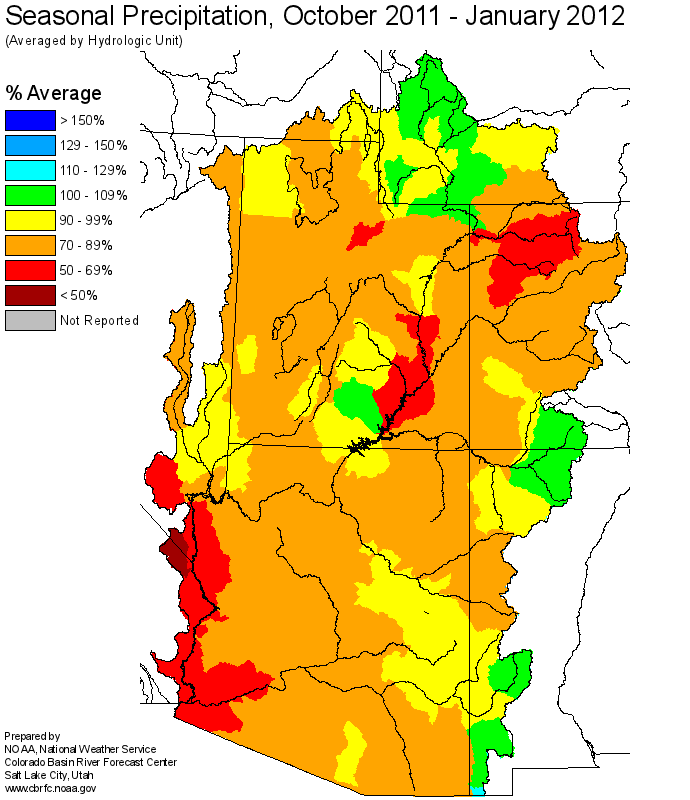The following conditions influenced this month's forecasts:
Precipitation:
Seasonal October-January
precipitation was below average at 80 percent of average in the Virgin Headwaters.
January
precipitation was 55 percent of average in the Virgin Headwaters.
Snow:
February 1st snowpack in the Virgin River Basin was 60 percent of average.
Virgin River Basin
Snow Plot
Streamflow:
January streamflow volume for the Virgin River Basin was 85 percent of average and 110 percent of median.
Soil Moisture:
Modeled
soil moisture content was above average in the Virgin River Headwaters going into the winter.
Climate Forecasts:
La Nina climate conditions suggest slightly decreased chances of precipitation in this area.
Forecast Summary:
The February 1st snowpack in the Virgin River Basin was 60 percent of average.
Currently, as of February 1st, April-July runoff volumes are forecast to be 42 to 55 percent of average and 68 to 78 percent of the median.
If a dry weather pattern continues over the next couple of months, as is more likely to occur during La Nina conditions, future forecasts of April-July runoff volumes could easily drop further below current forecasts.
Differences between the full period forecasts and the residual forecasts may not exactly equal the actual observed volumes due to rounding conventions (see Definitions section).





